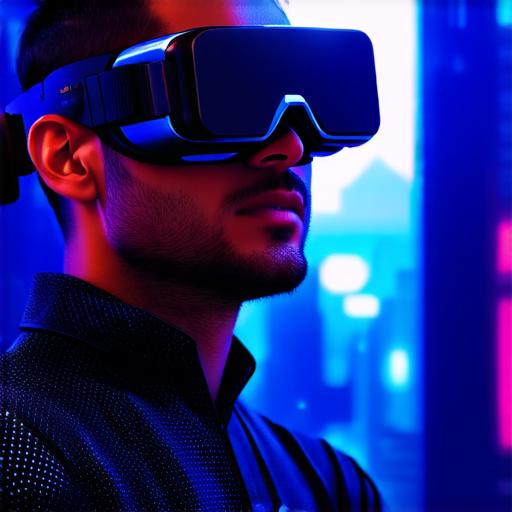Virtual Reality (VR) is a technology that has revolutionized the way we experience immersive entertainment and education. A VR headset provides users with an interactive, 3D environment that simulates real-world experiences.
However, to create a realistic and smooth experience, VR applications require a high frame rate.
Frame rate in VR refers to the number of frames displayed per second (fps) when rendering graphics. A high frame rate is crucial for several reasons:
-
1. Smooth motion
-
2. Reduced latency
-
3. Enhanced visual realism
-
4. Better performance and hardware requirements
One of the primary benefits of a high frame rate in VR is smooth motion. When you move your head or body, the virtual environment should respond quickly and seamlessly to your movements. A low frame rate can cause motion sickness, disorientation, and a feeling of detachment from the virtual world.

2. Reduced latency
Latency refers to the delay between your actions in the real world and the corresponding response in the VR environment. A low latency is essential for an immersive experience, as it allows you to feel like you are truly inhabiting the virtual world. A high frame rate can reduce latency by allowing the computer to render graphics more quickly.
3. Enhanced visual realism
A high frame rate in VR can also enhance visual realism by providing more detailed and realistic graphics. Higher frame rates allow for smoother transitions between different views and perspectives, making it easier to navigate the virtual environment. Additionally, a higher frame rate can improve the quality of textures and lighting effects, creating a more immersive experience.
4. Better performance and hardware requirements
A high frame rate in VR requires more processing power and resources from the computer or device being used. This means that higher frame rates may require more expensive hardware or a more powerful computer. However, better hardware can lead to a smoother and more immersive experience, making it worth the investment for serious users.
In conclusion, a high frame rate is crucial in virtual reality because it provides a smooth motion, reduced latency, enhanced visual realism, and better performance and hardware requirements. While higher frame rates may require more powerful hardware or resources, the benefits to the user experience make it a worthwhile investment for serious users of VR technology.
